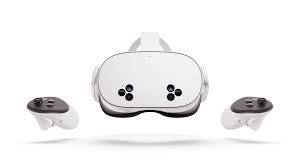An interesting post on Twitter/X by Yellow Peril Tactical raises an interesting question: does trigger finger position matter? In this article, I’m going to explore this topic. They’re right in some ways, but it’s a complex topic that needs to be explored further.
The reason you are missing with handgun.
If you are using the sights correctly and putting them in the right place, but the holes don't appear in the right spot during static untimed fire:
Your issue is most likely firing hand tension during the trigger press. pic.twitter.com/iqOwsyUDOS
— Yellow Peril Tactical (@YPTActual) January 2, 2024
The post goes on to explain further:
You’re tightening fingers on firing hand during shooting, moving the gun off target.
More support hand pressure will *suppress* this effect. Trigger control at speed drill w shot timer will show what’s going on and help you reduce that movement of the non-firing fingers.
If the shots aren’t even close to point of aim, then you are either not using the sights correctly, the gun is not zeroed, or you’re applying drastic movement from the wrists or shoulders in recoil anticipation. But for 90% of handgun shooters, the issue is firing hand tension.
What I’ve Seen In My Career
I’ve struggled with this problem a lot in my career as an instructor. Getting a beginner on the bullseye at 5 yards and then moving to 10 is often easy for first time shooters, but harder for people who have developed bad habits.
Pretty early on, I figured out that the old Army handgun diagnostic shooting chart was irrelevant 95% of the time, as was most of the shooting fundamentals we’re supposed to overload shooters’ brains with before going out on the range. I still taught the six fundamentals, but spent more time focusing on sight alignment and trigger control, then explained how the other four fundamentals (stance, grip, breathing, follow through) are really supporting actors in this play.
The next thing I figured out was that once a new shooter had the fundamentals (especially sight alignment) figured out well in dry fire, live fire really comes down to two things:
- Missing slightly left and right is mostly trigger finger position. I found that this was a problem with elderly people more often than younger people (more on this later)
- Up and down misses, or really far off target in any direction, is almost always recoil anticipation, solved by more dry fire and “ball and dummy” training.
I have been aware of the problem of tightening the dominant hand during firing, as that’s already listed on the old Army chart, and one of my academy instructors years earlier dispelled the notion that hand tension should be 80/20 (80% weak hand, 20% strong), instead saying it should be “100/100” (max out grip in both hands). Maintaining 100/100 pressure can lead to muscle tremors on longer strings, but if we’re honest with ourselves, we’re probably all going to go 100/100 during a defensive shooting.
So, I’ve generally given students this advice anyway, but had to use trigger position to tune up some struggling students’ marksmanship.
Giving This A Fresh Look To See How It Applies
With my experience with this out of the way, I decided to give trigger finger position and hand tension a fresh look doing some dry fire with my SIRT pistol.
When I intentionally gave my right hand less tension than usual, the guys at Yellow Peril were proven correct. The more I moved my finger left or right, the more the laser would jump in that direction. Tensioning the strong hand back up did indeed suppress that effect, rendering the finger position almost completely irrelevant.
When testing this for off-hand shooting, I found that people naturally tighten more when shooting one-handed. This leaves more room for other errors, like riding recoil and anticipation.
All this having been said, I did find that extreme mispositioning of the trigger finger did still introduce errors, even with a tight grip. Finger-tipping the trigger, burying the trigger finger all the way past the first joint, and hard slapping all still bounced the laser around and introduced other grip issues. So, it’s still essential to teach students to roughly center the trigger on the pad of the index finger and to squeeze it straight back to keep them away from extreme errors.
The other caveat here is that elderly people and people with low grip strength might not be able to give enough grip strength to suppress the trigger finger position effect. So, if someone shows up to class with a Shield EZ (or you’re the Shield EZ owner), you probably need to watch out for this one and tailor instruction and/or practice to compensate and accommodate.








